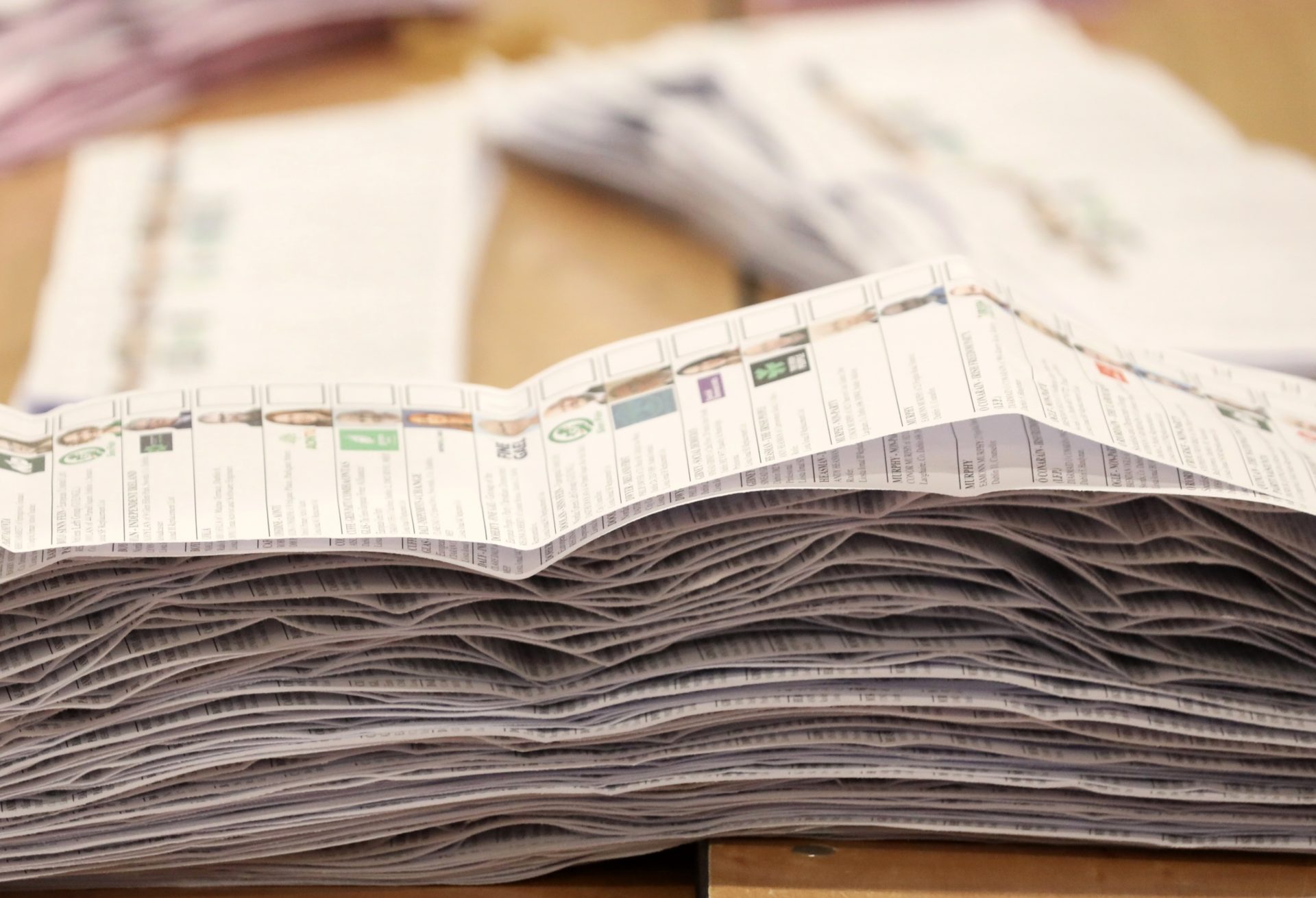As ballots counts roll in around the country, you may be wondering – how does it all work?
You can keep up to date with all the General Election results throughout the weekend through Newstalk’s live blog and video stream.
Ireland’s voting system works on proportional representation (PR) with each voter having a single transferable vote (STV).
PR-STV is a candidate-based system, which means that you can vote for as many or as few candidates as you like in order of your preference.
The candidate you put as number one is always counted – this is why it is the ‘most important’ vote.
Your second choice (and however far down you voted) may be counted if your number one is eliminated at the end of a round of counting, or is elected with a surplus of votes.
These ‘extra votes’ are known as transfers.
When voting is over all ballot boxes containing ballot papers are taken to a central counting place for each constituency – such as the RDS, Limerick Racecourse and more.
For all PR-STV elections votes are counted in the same way.
Once ballot boxes are all opened, the number of ballots issued at polling centres is checked against the number of ballots that were in the ballot boxes to make sure all votes are being counted.
Each ballot paper is checked to make sure they are correctly filled in and not spoilt.
Ballot papers may be deemed spoilt due to writing on the ballot paper outside of filling in preferences; if no clear first preference is marked for a candidate; or if the ballot paper was not stamped by the presiding officer or polling clerk.
 Counting of ballot papers for the local and European elections in the RDS in Dublin, 8-6-24. Image: Sasko Lazarov/© RollingNews.ie
Counting of ballot papers for the local and European elections in the RDS in Dublin, 8-6-24. Image: Sasko Lazarov/© RollingNews.ieThe number of ballot papers are then counted to calculate the total number of legitimate, unspoilt votes - or the poll.
From there, ballot papers are sorted into first preference choices and counted by how many people voted for the same candidate as their first choice.
The quota of votes candidates need to reach to be elected is then calculated on the basis of the total valid poll.
It is possible to get elected without reaching the quota, but this can only happen when all other candidates are excluded.
The quota is a formula calculated on the basis of the lowest possible number of votes that can be filled by the number of candidates to be elected.
The quota is calculated by taking the total number of valid ballot papers and dividing it by the number of seats to be filled plus one and then adding one.
For example, in a four-seat constituency with a valid poll of 60,000 the quota is as follows: (60,000/4+1) +1 -= 12,001.
 Example calculation from the Electoral Commission Website.
Example calculation from the Electoral Commission Website.Generally, a popular candidate will receive a surplus of votes – which is the number of votes achieved over the quota needed to be elected.
Any candidate that reaches or exceeds the quota on the first count is deemed elected.
The first count is normally the only time that all of the second preference votes are counted under a candidate’s first preference vote.
This surplus is then split between the remaining candidates.
After all subsequent counts, it is only the remaining ballot papers, after a candidate has reached the quota, that are redistributed or transferred to the remaining candidates.
A surplus is only distributed if it can:
- Elect the next highest continuing candidate.
- Bring the lowest continuing candidate level with or above the second lowest continuing candidate.
- Qualify the lowest continuing candidate for recoupment of their election expenses or deposit (if applicable).
The question of whether a surplus is to be distributed is considered after each count on the basis of the surplus(es) then available.
If there is no surplus available or the distribution of a surplus is not allowed, the lowest candidates are excluded and their votes are distributed to the remaining candidates.
Two or more lowest candidates are excluded together if it is clear that the exclusion of one or more candidates cannot affect the result of the election.
When a candidate is excluded their votes are redistributed.
Any preference for candidates who have already been elected or have been excluded are ignored – it moves on to the next available preference on the ballot paper.
View this post on Instagram
Ballot papers will be deemed ‘non-transferrable’ if there is no preference marked for any remaining candidate who has not already been elected or eliminated at this stage of the count.
At any time, the returning officer can decide to re-examine or recount all or any of the ballot papers and change results already announced.
The returning officer is responsible for overseeing elections and vote counting in one or more constituencies.
Candidates can also request a recount, but these requests are generally only made when the outcome of an election is very close.
Newstalk reporters will be at count centres around Ireland bringing you all the results as they come in.
We will also be running election specials throughout today and tomorrow, and you can follow all the action on our live blog and on our social channels.
Main image: Staff counting the ballot papers for the Local and European elections in the RDS Dublin. Photo: Sasko Lazarov/© RollingNews.ie









